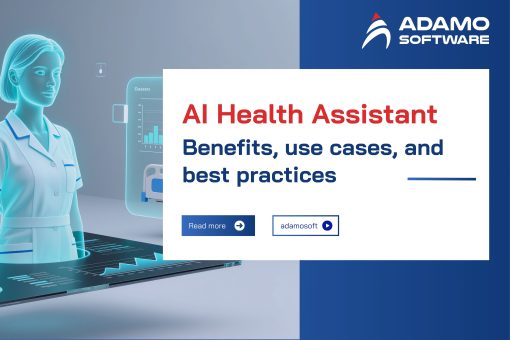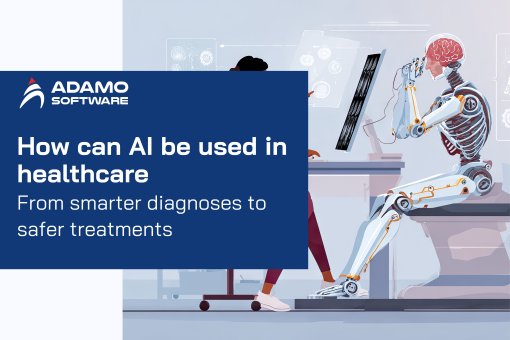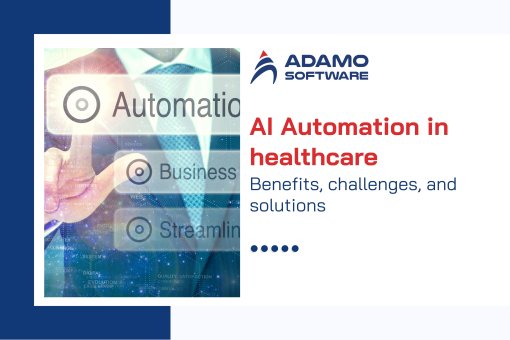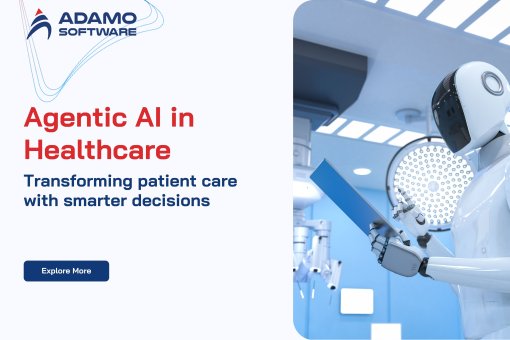Technology Trends in Healthcare Industry in 2026 and Beyond

In recent years, the rapid progress of technological advancements has been causing drastic changes to all industries. The healthcare sector is definitely not an exception. The use of technology in medical facilities around the world has been on the rise, with 38% of leaders in these institutions reported using technology (specifically artificial intelligence) in their everyday operations. The market for AI applications in healthcare is also valued at USD 20.7 billion, as data from Statista pointed out.
Recent technology trends in healthcare industry are promised to accelerate the effectiveness of all activities within this sector, be it research works or diagnosis or medical services. KPMG’s 2025 report pointed out that the main priority of healthcare facilities when utilizing technology is to increase productivity and gain customers’ trust.
The importance of technology in healthcare is undeniable, and it is certain that the implementation of technology in healthcare will continue to increase significantly in the coming years. Therefore, medical centers need to keep themselves updated on the latest technology trends in healthcare industry so that they can level up their healthcare services.
This article will look into 8 most remarkable technology trends in healthcare industry in 2026. If you are wondering about the emerging trends that will dominate the healthcare sector, you have come to the right place!
1. Generative AI
When talking about technology trends in healthcare industry, artificial intelligence (AI) is the one tech that must not be left out. AI has created significant development in the medical landscape, especially with the introduction of Generative AI – a branch of AI that specializes in creating new content in various forms of media.
Generative AI utilizes a combination of the latest technologies like AI and machine learning to significantly advance the delivery of healthcare. Examples of the positive impacts that Generative AI has on the medical sector include:
– In therapy sessions: AI can quickly synthesize and analyze big chunks of data from medical records to find out the most suitable therapy plans for each patient. This will very likely improve the effectiveness of the treatment process and help avoid any unwanted errors.
– In drug discovery: These models can replicate the interactions of molecules and forecast which of them might be a potential component for a new drug. This technology has remarkably sped up the old process of drug development that was both time-consuming and uneconomical and is especially useful in cases of urgent needs for new drugs to fight against new diseases.
In addition to the two points mentioned above, Generative AI also assists the process of diagnostic imaging by precisely interpreting the image. This provides medical staff with valuable information to make accurate decisions with errors minimized.
As potential as it is, jumping straight into these technology trends in healthcare industry might not be the best idea. The use of Generative AI in the context of healthcare still requires a lot of careful consideration from healthcare leaders to avoid any unethical or illegal implications. The most important consideration is, unquestionably, about protecting patients’ data from possible breaches.
Moreover, the human factor is also still needed to validate the outputs generated by AI to minimize any inaccuracies that could happen.
2. Data Integration and Predictive Analysis

Another application of AI and also one of the emerging technology trends in healthcare industry is data integration and predictive analysis, which is made possible by combining the essence of this technology with others like Big Data.
Every year, the healthcare industry collects an enormous amount of data from patients’ health records electronically. This massive source of information has a lot of potential to advance the treatment process if doctors know how to make use of it. This is where devices with data integration and predictive analysis functions come into play.
With the help of these technology trends in healthcare industry, doctors can have a deeper understanding of their patients’ conditions, make timely and precise diagnoses and decisions, and most importantly, minimize the risk of medical errors that might arise as a consequence of them being overworked.
Data integration refers to the process of combining a wide variety of data sources obtained in the healthcare system, like patients’ records, test results, etc. Once these sources of data are integrated and logically organized, doctors will be able to look deep into their patients’ medical histories and gain a broad understanding of their conditions.
Thanks to this, medical centers around the world can make informed and accurate data-based decisions and create a treatment plan that is best fitted to the patient’s needs.
Predictive analysis is the technology that leverages algorithms to analyze old and current data to make predictions about possible upcoming trends. In the landscape of the medical sector, this tech can help discover risky conditions that may occur for each patient so that doctors can be prepared and have a plan to treat them. By actively seeking out possible health problems, the healthcare system can take early actions against them, reduce the risk of severity for patients, and reduce healthcare costs for themselves.
Not surprisingly, technology trends in healthcare industry like these have created controversies about whether doctors would be made redundant if machines were now doing all their work. However, this seems unlikely as the human factor is still a crucial part of treating patients, and these devices will only be a tool to help the decision-making process of medical staff become more effective.
3. Remote Patient Monitoring (RPM)
Along with AI and Big Data, IoT, or Internet of Things, is also a critical component of the 4.0 Industrial Revolution and one of the most important technology trends in healthcare industry. In the healthcare sector, the application of IoT technology is referred to as Internet of Medical Things (IoMT), which includes many variations such as wearable devices or remote patient monitoring systems.
Remote patient monitoring (RPM) is one of the key technology trends in healthcare industry brought about by IoMT, which lets medical staff monitor their patients who are outside of the hospitals in real time. Companies like Moxa already have these devices that enable healthcare staff to keep an eye on the vital signs of their patients, allowing them to continuously monitor and intervene at the right time when needed without having the patient be physically present. This could significantly reduce the pressure on medical centers’ capacity.
Looking forward, IoMT’s constant development holds great potential for expanding the capabilities of monitoring patients remotely far more than these current approaches. The more these technology trends in healthcare industry are adopted, the better for the whole system and customers. Once hospitals can take advantage of these emerging healthcare technology trends, their productivity will surely increase tremendously.
4. Nanomedicine
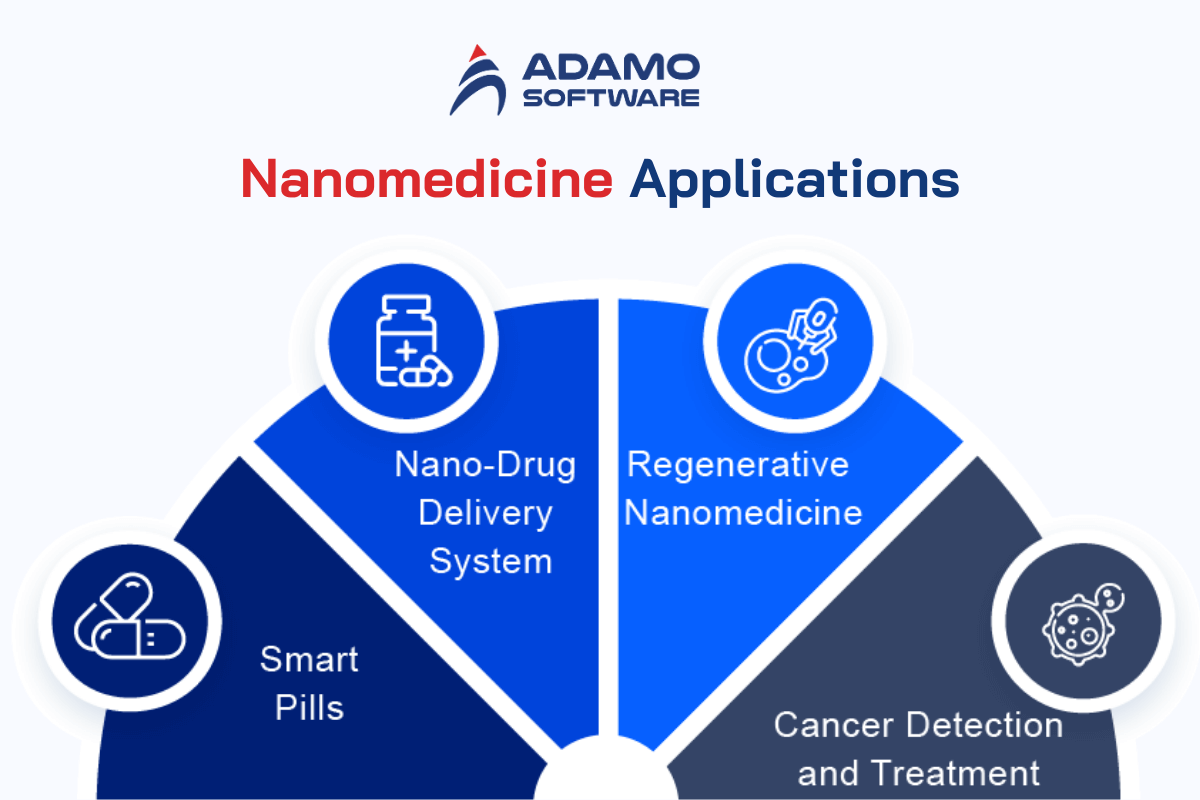
The next name in 2024’s list of technology trends in healthcare industry is nanomedicine. Nanomedicine, put simply, is the application of nanotechnology in the medical context. It is revolutionizing the industry with targeted treatment processes, which helps increase the precision of health problem diagnosis. This technology utilizes nanobots as well as nano particles for a wide range of healthcare needs, such as:
– Targeted drug delivery: This is when nanoparticles are engineered to deliver drugs directly to infected cells, and thus, help reduce the possible side effects while improving the effectiveness of treatments. Targeted drug delivery is especially crucial for the treatment of cancerous cells, where chemotherapy is only targeted at certain cells that carry cancer instead of affecting other healthy cells.
– Nanosensors: Nanosensors enable medical staff to continuously monitor patients’ health conditions and detect any early symptoms of diseases. This is achieved through the use of biomarkers at extremely low concentrations. Nanosensors not only assist proactive healthcare management but also make room for timely intervention, which ultimately helps improve the treatment outcomes.
– Diagnostics & Imaging: nanotechnology enhances the resolution and accuracy of imaging methods such as MRI scans. Nanoparticles can be used to improve contrast agents used in imaging, thereby increasing the clarity of diagnostic images and enabling early detection of diseases.
– Regenerative medicine: This is one field that also benefits significantly from nanomedicine, thanks to the development of nanomaterials that replicate biological structures. Nano-scaffolds, for instance, provide a framework that assists tissue regeneration by enabling cell growth and differentiation. This approach is very promising for repairing and replacing damaged tissues and organs, which will revolutionize treatments for conditions ranging from bone fractures to organ failure.
– Battle against antimicrobial resistance: Nanotechnology plays an important role in combating antimicrobial resistance with the introduction of antimicrobial nanoparticles. These nanoparticles offer novel mechanisms that allow doctors to target and remove drug-resistant bacteria, solving a critical problem in infection management and public health.
As research in nanomedicine improves, it continues to bring great developments to the healthcare sector. Future advancements in technology trends in healthcare industry like this are expected to deliver even more ground-breaking solutions to persisting medical issues and enhance the efficiency of therapies.
In 2024, nanomedicine will remain one of the leading technology trends in healthcare industry, driving forward the evolution of personalized medicine and opening a new era of high-quality healthcare.
5. Augmented & Virtual Reality (AR/VR) Adoption
Augmented and virtual reality (AR and VR) are outstanding technology trends in healthcare industry, which offer various applications that bring the digital and physical world closer in a number of different ways. Augmented reality, which is developed largely thanks to artificial intelligence, enhances medical diagnostics through advanced image recognition techniques, facilitating early detection of conditions such as cancer. Meanwhile, virtual reality is valuable in therapeutic settings, particularly in treating mental trauma and phobias through immersive experiences.
Healthcare professionals benefit from augmented reality glasses that combine CAT scans and 3D scan data, giving them an enhanced visualization of patients’ bodies. Industry leaders like Apple with their Apple Vision Pro or Microsoft with the HoloLens are great contributors to the development of these mixed reality experiences. For example, the HoloLens has proved its effectiveness in surgical planning and has even supported intricate procedures like open-heart surgeries or full-face transplants.
Looking forward, the integration of augmented and virtual reality is among the technology trends in healthcare industry that is expected to expand beyond simple virtual check-ups, and will likely revolutionize remote medical treatments, including fully automated surgical operations.
These advancements are proof of the transformative potential of AR and VR in healthcare, promising to improve patient care, optimize treatment outcomes, and redefine the delivery of medical services all around the world.
6. Wearables Devices in Healthcare

Wearable technology, another key factor of emerging technology trends in healthcare industry, is a technology that creates a wide range of electronic devices that can be worn as accessories, implanted into the body, combined with clothing, or even tattooed on the skin. Wearables have become a truly important part of today’s healthcare system.
For instance, smartwatches allow doctors to monitor patients remotely by providing real-time data on patients’ heart rates, blood oxygen saturation, and vital signs.
However, wearables are a lot more than just smartwatches. Biopatch technology, for example, can provide quality insights into vital signs, giving clinicians detailed physiological data. Similarly, advancements in smart hearing aids that use artificial intelligence to improve noise isolation also help improve auditory clarity for wearers.
In the context of technology trends in healthcare industry, wearables are undeniably very important in advancing the processes of medical diagnostics and patient care. These devices not only facilitate continuous monitoring of health metrics but also provide individuals with actionable insights about their well-being.
As wearables continue to evolve and become an indispensable part of the healthcare systems, they are guaranteed to redefine how healthcare is delivered, making monitoring and managing health more accessible, efficient, and personalized.
7. Telehealth/ Telemedicine Solution
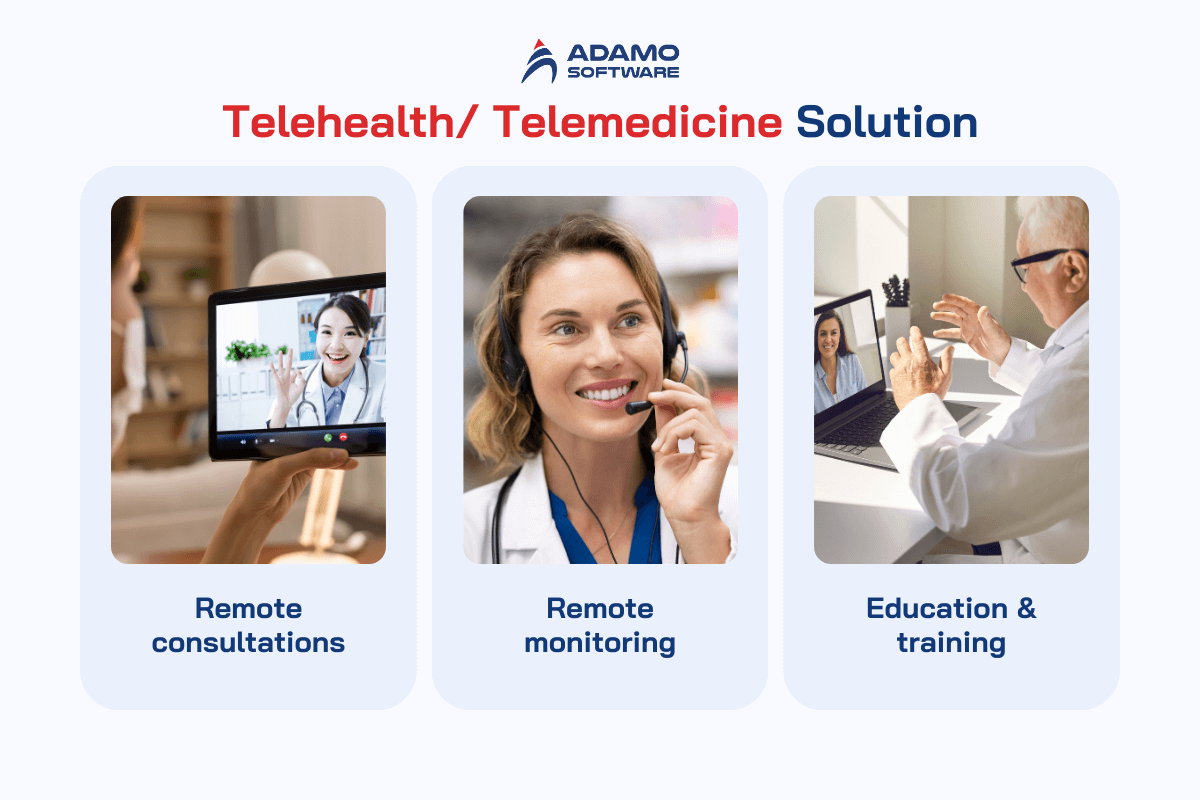
Telehealth and telemedicine are important technology trends in healthcare industry in transitioning traditional offline services to online and remote ones. These developments in telemedicine applications and platforms offer hospitals and healthcare providers huge benefits through their assistance with facilitating remote consultations, reducing patient wait times, and broadening access to specialist care.
Some use cases of telehealth and telemedicine include:
– Remote consultations: Patients can get advice from healthcare professionals for non-emergency medical issues, prescription refills, or follow-up appointments without having to line up in hospitals. This accessibility is convenient and helps reduce the pressure on the physical capacity of healthcare facilities.
– Remote monitoring: This allows doctors to continuously track patients’ health data and conditions from a distance. This is particularly valuable in managing chronic diseases or post-treatment recovery, enabling proactive interventions based on real-time data.
– Education & training: Telehealth platforms are also very useful in providing education and training opportunities for healthcare professionals. Remote learning activities can enhance their skills, share medical knowledge, and keep industry insiders updated with the latest advancements in medical practices and treatments.
As telehealth and telemedicine technologies evolve, they are expected to level up healthcare delivery by making services more accessible, efficient, and patient-centered. These technology trends in healthcare industry not only address medical care inequality in less privileged communities but also allow healthcare providers to deliver high-quality care remotely.
8. Virtual Healthcare Assistants
Virtual healthcare assistants (VHAs) are the last one among technology trends in healthcare industry to be mentioned in this article. It is a technology that uses chatbots or AI-powered programs to interact with patients through voice-based or text-based chats. These virtual assistants offer a wide range of functionalities aimed at enhancing patient care and accessibility.
One of its benefits is 24/7 support. Patients can reach out to VHAs at any time to obtain information on health-related topics, receive assistance with medication, or schedule appointments. This continuous availability helps address patient needs in a fast and timely manner, ultimately improving overall healthcare accessibility and patient satisfaction.
In terms of mental health support, VHAs can offer basic psychological assistance. They provide patients with resources about self-management, such as coping techniques or educational materials. Other than that, VHAs can connect patients with mental health professionals when more specialized care is needed, which helps to close the gap in mental health services.
As VHAs continue to improve with the many advancements in AI and natural language processing, their potential to enhance patient engagement also grows significantly. These virtual assistants empower patients by providing them with personalized, accessible healthcare information and support that are all personalized to each person’s specific needs and preferences.
By leveraging technology trends in healthcare industry like this, medical centers can equip themselves with modern healthcare systems, fostering a more customer-centric approach while optimizing healthcare system productivity. As their capabilities expand and acceptance grows, VHAs will surely become an invaluable tool for accessible, responsive, and high-quality healthcare for everyone.
You can explore more about Outsourcing Healthcare Software Development: Here’s when it works here.
Final Thoughts
Healthcare and technology will continue to cross paths, pushing the healthcare industry toward constant advancements. The application of AI-powered tools, along with IoMT, Big Data, and Machine Learning and other technology trends in healthcare industry will create a whole new future for this sector, where everyone everywhere can get access to the most high-quality medical service. It is also important that healthcare leaders recognize the power of these technology trends in healthcare industry to fully take advantage of them and become leading healthcare providers.

If you’re not sure about where to begin on this journey of healthcare digitization, please don’t hesitate to reach out to us at Adamo Software. We are offering a wide range of healthcare software development services ranging from TeleHealth / Telemedicine Solution, Remote Patient Monitoring to Wearable Medical Devices that could help you level up your healthcare organizations. Whatever big ambitions you might have, share them with us and we’ll help you bring them to life!







